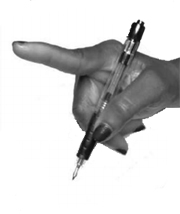Interested readers are referred to the following references, which contain greater detail on rating scales for dystonia:
- Consky ES, Lang AE. Clinical assessments of patients with cervical dystonia. In: Jankovic J, Hallett M, editors. Therapy with botulinum toxin. New York, NY: Marcel Dekker; 1994. p 211–237.
- Comella CL, Leurgans S, Wuu J, Stebbins GT, Chmura T. Rating scales for dystonia: a multicenter assessment. Mov Disord 2003; 18:303–312.
Toronto Western Spasmodic Torticollis Rating Scale
Download TWSTRS as pdf TWSTRS rating sheet
Description of the Scale
The scale is composed of three subscales that measure symptom severity, disability, and pain. Each subscale is scored independently and a total TWSTRS score (from 0 to 85) is calculated. A training tape for clinicians is available for the severity scale.
- The severity scale, clinician-rated, is composed of 11 items that assess head movements, duration of symptoms, effects of sensory tricks, shoulder elevation and anterior displacement, range of motion, and time in neutral position; the maximal score is 35.
- The disability scale, patient-rated, comprises 6 items, including daily activities, work, reading, and driving; the maximal score is 30.
- The pain scale, patient-rated, comprises 3 items including severity, duration, and disability due to pain; the maximal score is 20.
Scale Application in Dystonia.
The TWSTRS has been developed specifically for patients with cervical dystonia, and is the most widely used rating scale for cervical dystonia, with internal consistency and acceptable interrater agreement.
Strengths and Weaknesses.
The TWSTRS assesses the severity of cervical dystonia and includes disability and pain subscales. The TWSTRS includes a videotape protocol allowing its use to evaluate all patients in a standardized fashion.
Despite its value in clinical trials, the TWSTRS scale might be too complex for routine clinical practice. Weaknesses consist of an unclear definition of midline for assessing range of motion, lack of a separate scoring category assessing dystonic tremor, and the specification of duration for the effect of sensory tricks.
Other scales include:
1. Cervical Dystonia Impact Scale (CDIP-58)
Cano SJ, Warner TT, Linacre JM, et al. Capturing the true burden of dystonia on patients: the Cervical Dystonia Impact Profile (CDIP-58). Neurology2004;63:1629–1633.
2. Craniocervical Dystonia Questionnaire (CDQ-24)
Muller J, Wissel J, Kemmler G, et al. Craniocervical dystonia questionnaire (CDQ-24): development and validation of a disease-specific quality of life instrument. J Neurol Neurosurg Psychiatry2004;75:749–753
3. Fahn-Marsden Dystonia Rating Scale (FMDRS)
Burke RE, Fahn S, Marsden CD, Bressman SB, Moskowitz C,Friedman J. Validity and reliability of a rating scale for the primary torsion dystonias. Neurology 1985; 35:73–77

